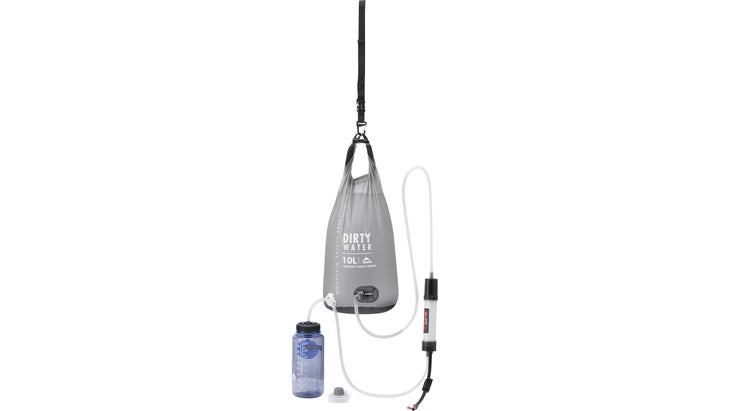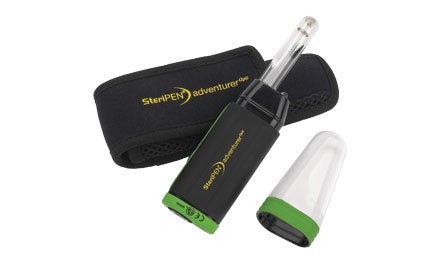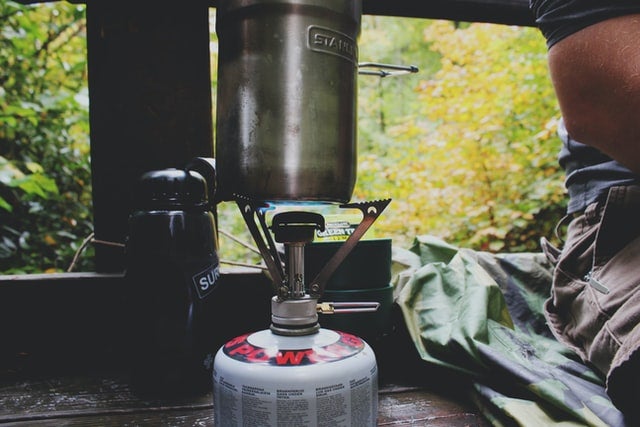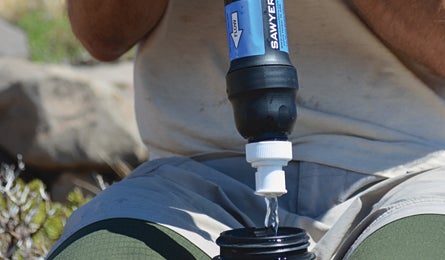Heading out the door? Read this article on the new Outside+ app available now on iOS devices for members! Download the app.
If you’re looking to venture out on your first overnight or just want to tackle longer dayhikes without worrying about staying hydrated, you need to figure out the best way to purify water on your hike. Clean drinking water is one of the ten essentials, meaning you should always have a plan for gathering and purifying it before hitting the trail. Many backpackers, especially experienced ones, will tell you to go ahead and just drink from the source. But while some wild water is safe to drink straight, even clear-looking streams, lakes, and rivers can contain bacteria and illness-causing parasites such as giardia, especially in high-traffic areas There are a handful of different methods for killing germs and removing contaminants from water: filters and purifiers, chemical treatments, boiling, and UV light. Read on to understand each method and determine which is best for you.
Water Filters
Filters work by straining water through a very fine porous material that removes bacteria and protozoa. They come in a number of different forms, from pumps, gravity filters, squeeze filters, or integrated bottles. Pumps are long-lasting, cleanable, and convenient for quickly filling a bottle. Gravity filters work great for larger groups, and require almost no effort on your part. Squeeze filters are popular with thru-hikers, and can attach directly to a water bottle, bladder, or pouch for instantly drinkable water. Filters can last years—some can clean up to 1,500 liters of water—but beware: Ice can destroy a filter, so take car in subfreezing temperatures.
Pros
- Removes harmful bacteria and protozoa
- Removes sediment and grit from your drinking water
- No chemical aftertaste
- Long-lasting
- Great for hiking in North America
Cons
- Require some maintenance over time to clean filter
- Can take time to pump or filter water
- Does not remove viruses; less suitable for international travel
- Can be bulkier and heavy than other filtration options
Water Purifiers
 Purifiers work much like standard water filters, but they have the added benefit of removing viruses. Some models remove heavy metals like lead as well.
Purifiers work much like standard water filters, but they have the added benefit of removing viruses. Some models remove heavy metals like lead as well.
Pros
- Remove viruses in addition to bacteria and protozoa
- Great for international travel where water may contain harmful pathogens
- No chemical aftertaste
Cons
- Can take more time to pump or purify water than a normal filter
- Often more expensive than non-purifying filters
Chemical Treatments for Water
Treatment tablets or drops purify your water right in your bottle, and they’re affordable, compact, and lightweight. Iodine tablets or chlorine dioxide drops are popular treatment methods. Different brands require different amounts of treatment to clean your water, and often require you to follow a few steps. But be sure to read the label carefully ahead of time: There are some bacteria and other nasties that chemical treatments can’t kill.
Pros
- Affordable
- Compact and lightweight
- Effective at removing bacteria, protozoa, and viruses from water
Cons
- Often requires you to wait up to 30 minutes before drinking
- May give water an unpleasant taste
- Does not remove sediment or grit from water
- It’s possible to leave water in the threads of your bottle untreated

Treating Water With UV Light
Wand-style or bottle-integrated UV purification systems use ultraviolet light to kill contaminants. This high-tech solution works quickly, but it does have its downsides. For starters: It won’t work as well on cloudy water, so you may have a hard time using it in bigger rivers or some standing water sources.
Pros
- Removes bacteria, protozoa, and viruses from water
- Easy to use and works quickly
Cons
- Requires batteries or solar charge to operate
- Only filters one bottle at a time
Treating Water by Boiling

It’s the oldest and most basic form of water purification: Boiling. Whether or not boiling is your primary method for obtaining drinking water, it’s a great skill to have if you find yourself in a survival situation (or if you just want some hot tea or cocoa). Water needs to reach a rolling boil to kill all harmful germs. As soon as it’s reached this point, it’s safe to drink.
Pros
- Boiling is easy and foolproof
- Great for purifying water for hot drinks
- It’s a useful backup method of your filter breaks or fails
Cons
- Takes time and requires lots of fuel
- Does not remove sediment or grit

